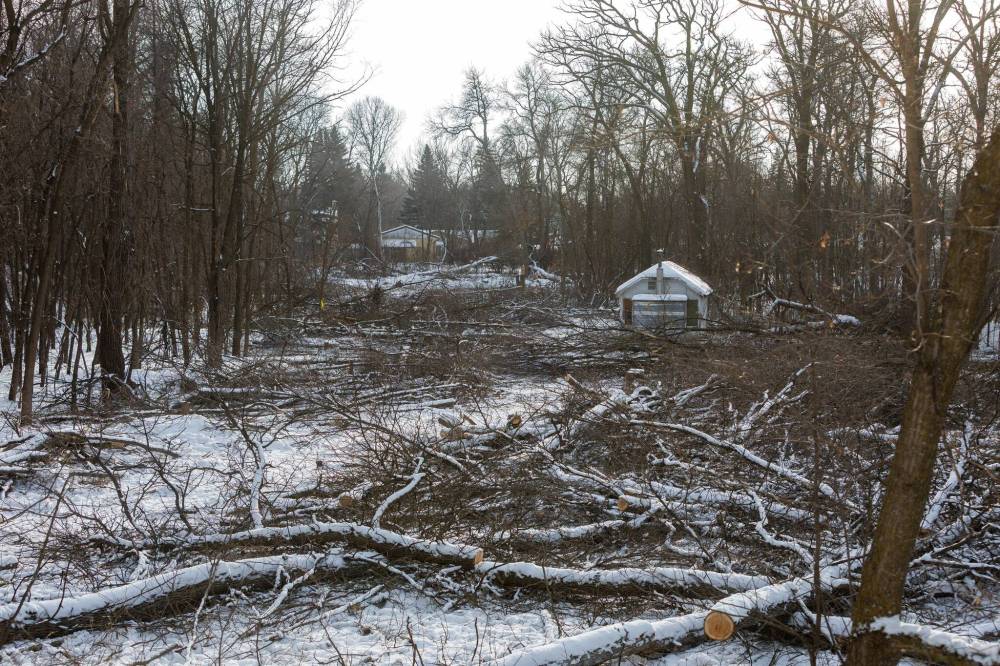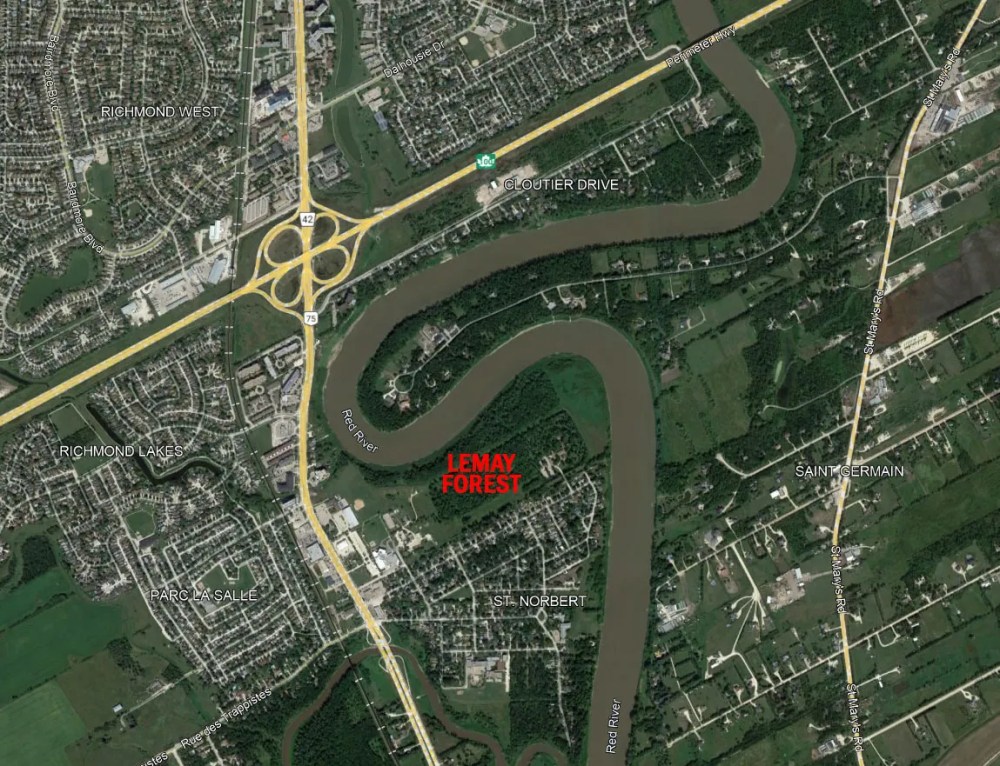Municipal board urged to turn St. Norbert land into ‘memorial forest’
Advertisement
Read this article for free:
or
Already have an account? Log in here »
To continue reading, please subscribe:
Monthly Digital Subscription
$0 for the first 4 weeks*
- Enjoy unlimited reading on winnipegfreepress.com
- Read the E-Edition, our digital replica newspaper
- Access News Break, our award-winning app
- Play interactive puzzles
*No charge for 4 weeks then price increases to the regular rate of $19.00 plus GST every four weeks. Offer available to new and qualified returning subscribers only. Cancel any time.
Monthly Digital Subscription
$4.75/week*
- Enjoy unlimited reading on winnipegfreepress.com
- Read the E-Edition, our digital replica newspaper
- Access News Break, our award-winning app
- Play interactive puzzles
*Billed as $19 plus GST every four weeks. Cancel any time.
To continue reading, please subscribe:
Add Free Press access to your Brandon Sun subscription for only an additional
$1 for the first 4 weeks*
*Your next subscription payment will increase by $1.00 and you will be charged $16.99 plus GST for four weeks. After four weeks, your payment will increase to $23.99 plus GST every four weeks.
Read unlimited articles for free today:
or
Already have an account? Log in here »
Hey there, time traveller!
This article was published 12/02/2025 (298 days ago), so information in it may no longer be current.
Several Winnipeggers urged the Manitoba Municipal Board to prevent development at Lemay Forest Wednesday, arguing new construction could disrupt unmarked graves and cut off access to culturally significant land.
Louise May urged the board to reject a development application for a 5,000-bed assisted living facility at the site, stating a sacred forest should be created instead.
“I am proposing to save the whole property and to develop a memorial forest. This property is a nationally significant historical burial ground connected to loss of land, language, livelihood and culture of the Indigenous people… (It is also) an anchor to the ecosystem many of us have been attempting to preserve and expand for decades,” said May, a St. Norbert resident.

MIKE DEAL / FREE PRESS FILES
Several Winnipeggers urged the Manitoba Municipal Board to reject a development application for a 5,000-bed assisted living facility at Lemay Forest, Wednesday.
A cemetery was part of the former l’Asile Ritchot orphanage, which operated from 1904 to 1948 in part of the current Lemay Forest. It housed orphaned infants of poor families and unwed mothers, as per the Manitoba Historical Society Archives.
Winnipeg City Council rejected Tochal Development Group’s proposal to build an assisted-living facility at Lemay Forest in September after deeming it too large for the site. The developer appealed the decision to the Municipal Board, sparking the hearing.
The project’s planner has repeatedly promised to complete an extensive search for potential graves and to avoid building within 100 metres of the former cemetery. However, multiple delegates at Wednesday’s hearing say they remain concerned.
Shelley Sweeney, a University of Manitoba archivist emerita, said burials may have taken place outside the cemetery at unclear locations.
“The plans for the land in question conflict with the cemetery that exists in Lemay Forest and possible burials surrounding that cemetery and elsewhere in the forest. We are not convinced by what the developer has said that the cemetery and burials will be safe,” said Sweeney.
More than 700 babies buried at cemetery
Recent preliminary research indicates 3,383 deaths are believed to be associated with the orphanage, including 31 children identified as Métis, the Saint-Boniface Historical Society says.
Sweeney said burial records show 726 babies were buried at the cemetery from 1907 to 1912.
“This cemetery is too important a historic site… It should not be privately owned,” she said.
Diane Bousquet, who is of Métis descent, said the site must be preserved because it has significant historical and cultural significance for Indigenous communities.
“This land is home to abandoned graves, Indigenous ceremonial spaces, places that hold sacred meanings,” said Bousquet.
She said the site includes multiple active sweat lodges, which host important ceremonies.
Bousquet stressed the future of the land must involve meaningful consultation with Métis people. Overlooking that feedback would undermine progress on truth and reconciliation, she said.
Cemetery site will be preserved: developer
During a presentation to the municipal board late Tuesday afternoon, the key planner for the assisted-living facility said the developer aims to preserve the former cemetery site as a publicly accessible green space.
“We acknowledge the harms of the previous land owners,” said John Wintrup.

Wintrup told the board the developer is committed to reconciliation and has completed four heritage studies of the land that have identified the “most likely” location of unmarked graves. He said further study to refine the findings is expected to begin this year.
“We’re not building on unmarked graves,” he said.
Wintrup said the developer would instead use the affected area, as well as a 100-metre buffer zone around it, to provide green space.
“We’re going to make that a green space publicly accessible to people (that is privately owned),” he said.
Meanwhile, Wintrup noted the proposed assisted-living facility would not be limited to residents who require health supports right away.
“Our vision is more inclusive, in terms of variety of ages. (That includes) anybody who’s… older but fully independent all the way to…. where you might need full care,” he said.
Wintrup said the entire proposed development site is about 23 acres, including about 17 acres of trees and six open acres.
The municipal board is tasked with making a final and binding order on the project within 60 days after the hearing ends. Thursday is scheduled to be its final day.
joyanne.pursaga@freepress.mb.ca
X: @joyanne_pursaga

Joyanne is city hall reporter for the Winnipeg Free Press. A reporter since 2004, she began covering politics exclusively in 2012, writing on city hall and the Manitoba Legislature for the Winnipeg Sun before joining the Free Press in early 2020. Read more about Joyanne.
Every piece of reporting Joyanne produces is reviewed by an editing team before it is posted online or published in print — part of the Free Press‘s tradition, since 1872, of producing reliable independent journalism. Read more about Free Press’s history and mandate, and learn how our newsroom operates.
Our newsroom depends on a growing audience of readers to power our journalism. If you are not a paid reader, please consider becoming a subscriber.
Our newsroom depends on its audience of readers to power our journalism. Thank you for your support.











